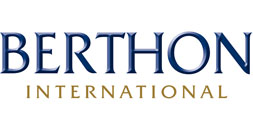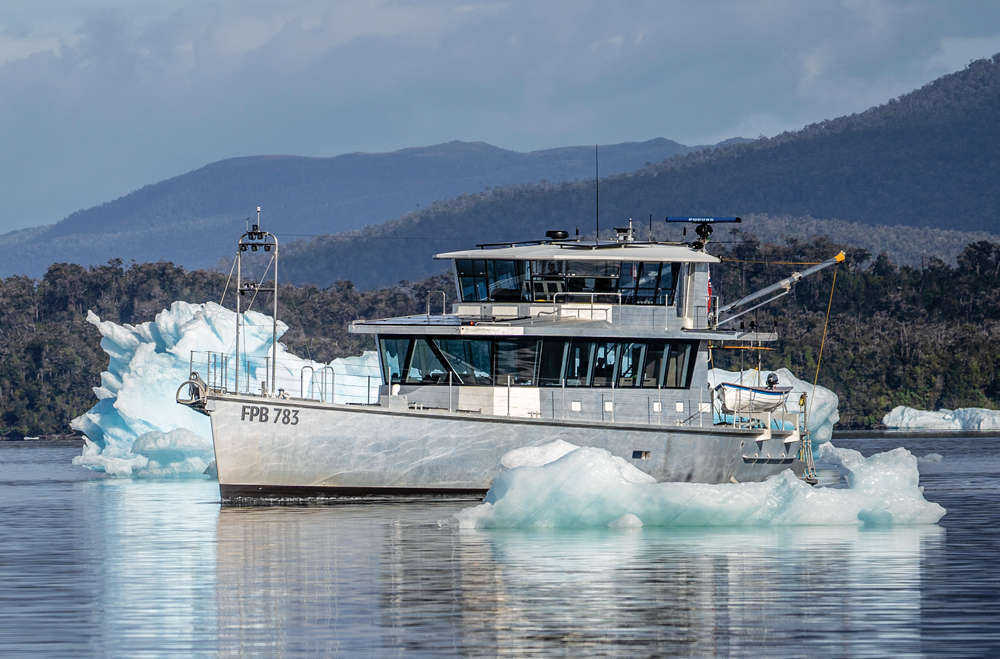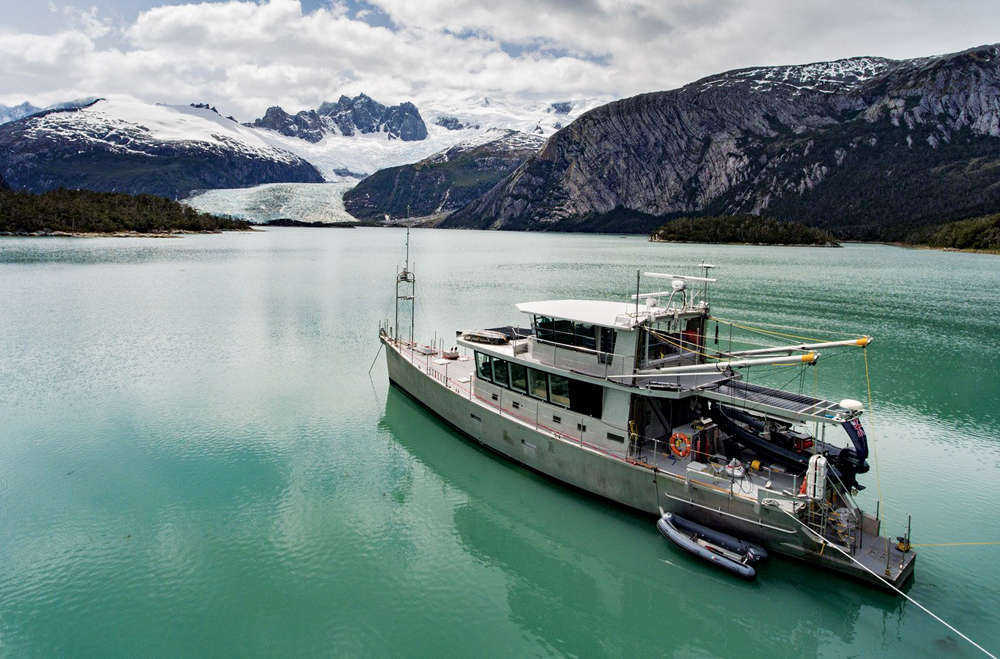Your Local Broker, Internationally
Berthon UK
(Lymington, Hampshire - UK)
Sue Grant
sue.grant@berthon.co.uk
0044 (0)1590 679 222
Berthon Scandinavia
(Henån, Sweden)
Magnus Kullberg
magnus.kullberg@berthonscandinavia.se
0046 304 694 000
Berthon Spain
(Palma de Mallorca, Spain)
Simon Turner
simon.turner@berthoninternational.com
0034 639 701 234
Berthon USA
(Rhode Island, USA)
Jennifer Stewart
jennifer.stewart@berthonusa.com
001 401 846 8404
HIGH LATITUDE CRUISING Steve & Linda Dashew look at the design and the risks
The Arctic and Antarctic have been the new Caribbean for the past few years and the voyage of FPB 78s GREY WOLF and IRON LADY shows that it requires skill and seamanship at a totally different level to the standard North Atlantic circuit taking in Caribbean waters – and that you need the tools for the job.
To this end, there are those who are jumping onto the bandwagon and are offering stainless steel bow protectors and electric cooking and saying that yachts are prepared for the ice but we must be careful in evaluating the good from the less good. There are also some good consultants that help with high latitude preparation because sailing in these areas is not something to be undertaken casually.
I asked Steve and Linda Dashew of Dashew Offshore, the designers of the Sundeer, Deerfoot and FPB series, about their experience in designing yachts suitable for cruising in the (very) cold places. Unlike many, Steve and Linda believe that they should try it before you buy it, so their designs are based on their real life experience of these areas and what’s more in yachts designed by Steve and Linda themselves! The FPB was designed for true world cruising and that includes the ability to navigate these cold waters.
With all that in mind, below is a question and answer session which we found illuminating –
High and low latitude have become increasingly popular cruising grounds over the past few years, as they really are the last wilderness. I know that you and Linda have cruised these waters. How long ago did you make your first voyage and what was the attraction to the cold places?
We first cruised to Alaska aboard SUNDEER our 68’ aluminum ketch in 1991. Pushing through the glacier ice and chatting with a Canadian ice-breaker captain were eye openers. But in reality Southeast Alaska and even the Kenai Peninsula and the Prince William Sound area are relatively tame. It wasn’t until 2007 with FPB 83’ WIND HORSE on the outside of Baranof Island that we got a sense of what draws some people to these environments. Western Baranof is isolated, charts are not well detailed, it’s lovely, there’s wildlife, and the scenery is dramatic. It sufficiently whetted our appetite that a few months later we were planning our trip from Southern California to Greenland.
Greenland truly has it all – exquisite beauty, big ice, danger, isolation and the absolute need to function no matter what without outside aide. You also need to understand that if you are caught out by weather, ice, or operator error the result could be terminal. When we saw Greenland recede into the west as we headed to Ireland it was accompanied by a profound sense of relief. But it stays with you. 6 weeks later we were talking about heading up to Svalbard.
What is the single most difficult thing about navigating these waters?
There is no single item, but from our experience some of the biggest challenges include: lack of charts and bottom detail, navigating in heavy fog with ice where you must keep moving due to incipient weather risks, staying up with and ahead of glacier or pack ice flows. And there is no single electronic tool that covers all the bases. Radar, sonar, thermal imaging all have a place, but together can still leave gaps. That is when you simply have to rely on experience, intuition, and have sufficient safety factors to hopefully cover most unexpected problems.
Tell us a bit about crew preparation.
Experience in using sonar – interpretation takes experience, radar (much easier than sonar), plus sea sense is important. Practice using these tools so you are proficient when you really need be.
Obviously you are on your own for trouble-shooting and maintenance. Having skills in electrical, plumbing, machinery, and electronic trouble shooting are important. Access to systems, understanding the logic of how things work, along with owners’ manuals, schematic drawings, and “cheat sheets” covering the array of work-arounds that all yachts have will prove invaluable. Tools, spares, where they are stored for quick retrieval, and how to use them needs to be known.
Even more important is the ability to function under pressure.
What was your most difficult passage and how important is speed in managing these waters?
Speed is critical, as is range – the latter due to the vessel’s independence and higher speeds it affords (resulting in much higher fuel burns). Weather windows where weather, ice, and fog are favorable tend to be short.
By far the most difficult passage for us in terms of stress and risk was between Disco Bay and the Prince Christian channels in Southern Greenland. Toward the end of an otherwise uneventful trip, a strong gale was forecast. With plenty of light, navigating through the iceberg and berg bits was relatively easy. With 100 miles to go – just 9 hours at WIND HORSE’s normal cruising speed – the situation was well in hand. That is until we ran into a wall of fog so thick that at times we could not see the bow. Our commercial grade Furuno 2117 radar, still one of the best radars available, could pick out the smaller icebergs no problem. But the smaller “bergy bits”, plenty big enough to do serious damage, did not show.
With both of us standing right at the forward windows staring, trying to discern shapes, we were constantly altering speed, 12.5 knots when it was clear, 2 to 3 knots when totally obscured. After 6 hours the fog lifted and we were able to find shelter before the blow arrived. In all of our years at sea this was by far the most stressful period.
Of course you were aboard WIND HORSE for your cruising to the ice, what lessons did you learn that have been incorporated into later FPBs, and most particular your FPB 78’ COCHISE?
WIND HORSE was massively strong, with excellent sight lines from her interior great room steering station. With her 3 fully isolated watertight areas and four partially isolated areas we considered her bombproof. The FPB 78’s are even stronger, have 6 separate watertight areas, a higher double bottom relative to the waterline, plus a conning station in the Matrix deck that can still be used in the cold while protected from the elements. The sight lines from the higher position are a significant improvement in almost all situations.
COCHISE’s sisters IRON LADY II and GREY WOLF II have been cruising in the Antarctic this Northern Hemisphere winter. I know that you have kept in close touch with them. What are the standout features that they have which make them suitable for such a cruise?
Speed first – Drake Passage, between Cape Horn and Antartica is considered by many to be the most treacherous bodies of water on the planet, with rapidly changing weather and dangerous sea states. Yet it’s just a 2 day hop at normal cruising speed. Speed also helps for the shorter passages within the Antarctic Peninsula. The ice conditions this year are worse than usual in the South and this puts an even greater emphasis on structural factors of safety and efficient conning.
How important was real life cruising experience in the design process for yachts that are going to make passage in the cold places?
For us everything we do has been influenced by our own experience. Both Linda and I like challenges, and we enjoy going places others might avoid. But we are also very conservative, and while we are willing to take risks, this is only if we have the right tools. Cruising with environmental and geographic challenges appeals as long as we know the boat will reliably see us through. Reliability comes from choosing simple machinery over complex systems, proper dry installation, and easy access to everything. A good example of this are watermakers; these are convenient to have but also troubleprone. A basic watermaker consists of membranes and a high pressure pump. Stay with a basic unit, avoid the automatic features and there is little to go wrong.
Our structures have grown concurrently more conservative with our time in the high latitudes. The FPB 78’s have 26 metric tons of aluminum in their basic structure alone.
What would be your advice to cruising yachtsmen who want to sail these waters who are – i) Having a yacht built for the purpose ii) Going to adapt an existing yacht
That is a difficult question to answer. The decision matrix for creating a normal long distance cruising yacht is already complex. When you add high latitude and ice operation to the mix, the situation becomes significantly more challenging. The right answer is always going to vary with the targets of the owner and experience of the design and build team.
What we are after in our own perfect yacht may be different from what someone else wants. What we can tell you for certain is that the optimum configuration is a moving target. For example, WIND HORSE, the first FPB, was considerably different than our 67 foot ketch SUNDEER in how we set our design targets. 60,000 nautical miles of experience with WIND HORSE, much of it in the high latitudes, thereafter impacted how we designed the other FPBs. When it came time to our own next boat, the FPB 78’ COCHISE and her sisters, the goal was shifted toward extreme ice conditions.
For your readers who are thinking of outfitting either an existing yacht or building new, we’d advise taking the time to write out a carefully drawn and realistic set of targets. Then look at the answers to all aspects before deciding on any single issue. Not all of these targets are going to blend; there will have to be compromises on the wish list. The earlier this refinement of the specification comes together, the easier and more efficient the design and build cycle.
Questions we would have on our own list include:
- Orientation toward the high latitudes, tropics, or both?
- What level of physical comfort is required?
- How do we approach heating, ventilation, insulation?
- What are the factors of safety needed? (for example – level of ice impact capability)
- Boat speed and range?
- Draft?
- Systems complexity versus the ability to repair in situ?
- Props exposed or protected?
- Ground tackle logic?
- Approach to shore-fasts?
- Dinghy size, quantity, storage and handling?
- Level of preparation in case of being trapped and having to spend the winter?
- Accommodation targets?
- Storage volume for specialized high latitude equipment and personal gear, along with emergency food supplies?
Armed with answers to these questions you are in a position to decide if the yacht FPB 78’ IRON LADY II that you are contemplating will fit the brief.


